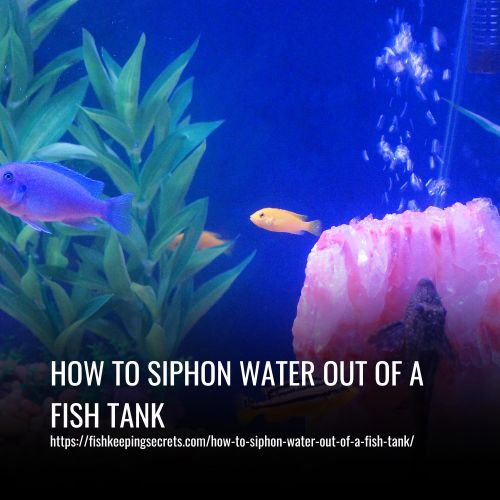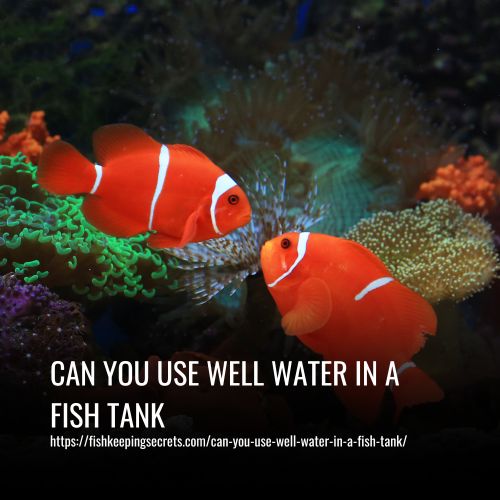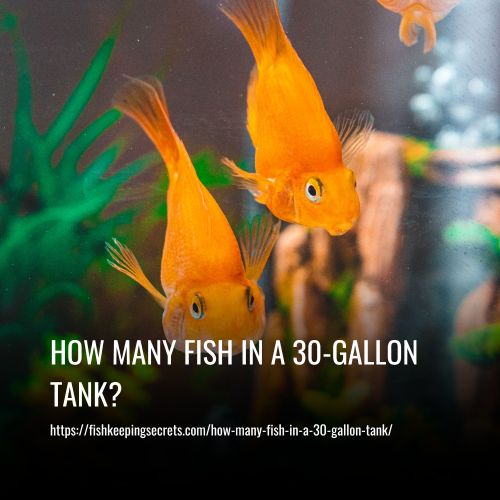How To Siphon Water Out Of A Fish Tank
This post contains affiliate links. As an Amazon Associate, we earn from qualifying purchases.
Siphoning water out of a fish tank is an essential task for keeping it clean and healthy. But if you’ve never done it before, it can seem intimidating. Don’t worry – with the right supplies and instructions, this task is simpler than you think!
To Siphon Water Out Of A Fish Tank, follow these steps:
- Set Your Bucket.
- Position the Siphon Tube.
- Flood the Tube and Vacuum.
- Seal the Opening.
- Lift the Opening.
- Lead the Water to the Bucket.
- Stop the Flow.

Ways to Use Your Aquarium Siphon
Main Ways to Use Your Aquarium Siphon:
1. Set Your Bucket:
You should place the bucket below the tank of your aquarium to avoid spilling the water from the siphon when filling it up. If this isn’t possible or desirable, you can use an adjustable blade to cut off any excess tubing. Ensure that all parts are securely connected and don’t have any sharp edges which could cause harm to your fish.
Lastly, monitor your fish closely after introducing new water to your tank to ensure their safety and comfort.
2. Position the Siphon Tube:
To begin the siphoning process, insert one end of the siphon tube into the aquarium, keeping it several inches above the gravel. Then take one side and point it towards a nearby bucket while pointing the other side away from it. This will create a vacuum effect that will pull water from the aquarium and into the bucket.
Make sure to maintain an equal distance between both ends at all times throughout the process to ensure effective siphoning. When finished, be sure to turn off your equipment and discard any used water according to local regulations.
3. Flood the Tube and Vacuum:
Maintaining a healthy fish tank is important for the well-being of your fish. One way to do this is by using a vacuum tube. A vacuum tube is used to remove excess food, dirt, and debris that may accumulate in the substrate or filtering system of your tank.
To use the vacuum tube, slowly lower the open end of the tubing into your tank so that water displaces any air inside. This should be done regularly to keep your tank clean and your fish healthy.
4. Seal the Opening:
Once the debris has been collected from your tank, it’s important to ensure that there are no leaks in the vacuum. Start by sealing both ends of the discharge tube, pressing one finger against each end until all air bubbles have disappeared. It is important not to use too much pressure, as this can cause the seal to break. After the tube is sealed, carefully disconnect it from the filter and turn off the power before storing away the vacuum.
5. Lift the Opening:
With the tube pointing up and out of your tank, carefully lower it into a bucket, maintaining the seal. Make sure that both ends are still against their respective surfaces- if not, try again until you get this perfect connection. Once the water starts flowing, remove the finger from the discharge end so further advancement can occur naturally.
6. Lead the Water to the Bucket:
Cleaning an aquarium is not complete without vacuuming the tank bottom. It is important to have a second person on hand to help with this step, as vacuuming requires careful maneuvering of the vacuum’s discharge end into a bucket. When vacuuming, move the vacuum gently and carefully around the bottom of the tank. Having a helper nearby can be extremely helpful and make this process much more efficient and effective.
7. Stop the Flow:
Once you have finished your water change, it is important to stop the flow of water by raising one end of your aquarium higher than its original level. This will help reduce any potential risks of over-filling the tank, as well as provide a few minutes for any further adjustments or water changes that need to be performed.
Additionally, this helps to ensure that there is adequate circulation within the tank and will help keep your fish healthy and happy.
By Mouth
It is not recommended to siphon water out of a fish tank by mouth. This can be dangerous and potentially harmful to your health. Instead, use a siphon or vacuum tube specifically designed for aquariums to safely remove water from the tank.
1. Set Your Bucket:
When setting up a siphon, the best way to start is with your mouth. Place the bucket of water you want to empty lower than the container it will be draining into, then slowly lift it up allowing air to enter both containers. While doing so, use your pursed lips to push out some of the air and start the siphon.
Make sure not to suck in any of the water, as this can make you very ill! Once started, keep an eye on the siphon and adjust the heights of both containers if necessary, as well as make sure that any filters or aerators are working properly in order to maintain good water quality.
2. Position the Siphon Tube:
Start your siphon by sucking on the small opening to create a vacuum. Once you notice water flowing through the tube, place the end of the siphon close to the outlet of the tank. Position it so that it collects debris and waste from the bottom of your fish tank while avoiding any decorations or plants in your aquarium.
Be sure to keep a watchful eye as you move the tube around; you don’t want to disrupt any fish or clean away good bacteria! When done cleaning, make sure to turn off your filter before removing the tube from the tank.
Afterward, pour out any collected debris and return your gravel or sand back to its original position.
3. Initiate Suction:
When suctioning a water source, it’s important to remember to be careful. Start by placing your mouth on the discharge end of the pipe and lightly sucking. Be sure not to apply too much pressure, as this could result in an accident.
Additionally, make sure that you are wearing protective gear, such as goggles or a face shield, and that your hands are free from debris before suctioning.
4. Lead the Water to the Bucket:
Siphon cleaning is a simple and effective way to clean an aquarium. To start, submerge the end of your tubing in the tank and slowly begin to fill it with water by sucking on the other end. This will create a vacuum and allow you to remove any dirt, debris, or excess fish waste from the tank. Once you have finished cleaning, quickly remove your mouth from the tube and place it into a bucket.
After this, use suction to empty the water out of your tube so that it is ready for its next use. It is important to remember that siphon cleaning should be done regularly in order to keep your aquarium properly maintained and prevent the buildup of pollutants in the water.
5. Stop the Flow:
Once the water has been removed, it is important to lift one end of the fish tank up so that it is higher than where your source meter was. This will stop any more liquid from flowing in and allow small bubbles to remain. It is important to repeat this process until all the liquid has been completely drained. After completing this step, you can then proceed with cleaning and refilling the fish tank.
Refilling your aquarium
A water change has been completed successfully with the use of an aquarium water siphon. Before you began, it is important to make sure your water changer has been switched off to prevent water from flowing out too heavily. Then, head over to your sink and adjust the flow valve to redirect the flow of water from your faucet up the housing and into your tank.
Once the stream of water starts flowing upwards, slowly turn the on/off switch back on in your aquarium and let the freshwater enter. As it is entering, make sure to add your water conditioner so that your fish can live in clean and healthy conditions.
When finished filling your aquarium, turn off the faucet and the on/switch. Water changes are an important part of maintaining a healthy environment for your fish and should be done regularly according to their needs.
Packing away your water changer
When using a siphon for an aquarium, it is important to properly store the equipment after use. To do this, adjust the flow control valve on your faucet so that it drains and coil the hosing up slowly, starting with the end at your aquarium, allowing the water inside to drain out into the sink.
After the water has been drained from the faucet adapter, reattach the aerator and keep the water changer for future use. This will protect your tank until the next water change.
What Is A Siphon Pump?
Using a siphon pump is a great way to easily clean the bottom of your aquarium. It consists of a tube connected to a vacuum, with the front of the tube featuring a siphon that sucks up dirt and water, but not gravel. Once the water has been sucked up, it flows through the tubing and out the other end into a bucket or sink.
To use this tool, you simply need to insert it into your aquarium. In some cases, you might have to gently suck or pump in order to get the suction started. However, if your siphon is attached to a gravel vacuum then this shouldn’t be necessary.
When using your siphon pump, be sure to be aware of how much water you are removing from the tank and whether you need to replace any of it right away. If too much water is taken out at once it can upset the equilibrium in the aquarium and cause stress for your fish. Therefore, monitoring your aquarium’s environment while using this tool is key to ensuring your fish stay happy and healthy!
Siphon Pump With Vacuum
Using a siphon in your aquarium is quick and easy. All you need to do is insert the end of the siphon tube into the aquarium, turn on the gravel vacuum, and move it along the bottom of the tank to vacuum up dirt or drain out water.
Be sure to have the other end of the hose placed inside of a bucket or sink before turning it on, as this will prevent any potential floods. With proper use and maintenance, your siphon can help keep your tank clean and provide an efficient way to clean and maintain your aquarium.
FAQs
When using an aquarium siphon to remove organic waste, it should be submerged in an empty bucket and its tube should reach inside so water will flow through it.
To start a siphon, you will need an air leak in the tube. Place one side of the tube into the higher container and suck on it while keeping its opposite close so that water can travel freely without any obstruction.
Cleaning your aquarium regularly, typically once every two weeks or as necessary, is a key part of keeping fish.
Conclusion:
Learning how to siphon the water out of a fish tank is an essential skill for those who own one. With practice and the right equipment, even beginners can master this straightforward task.
While there are still certain safety precautions you should take when handling aquarium water, it’s clear that with the proper technique, effectively emptying your tank of its liquid contents is totally achievable.






